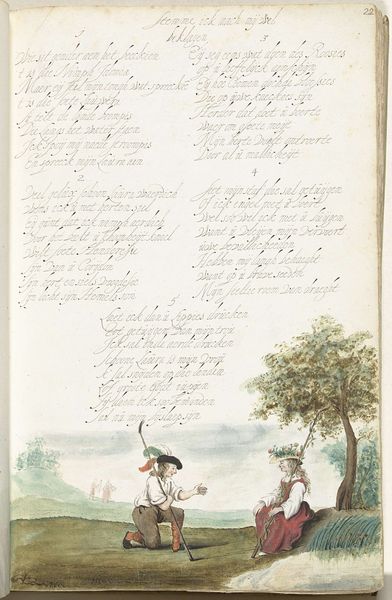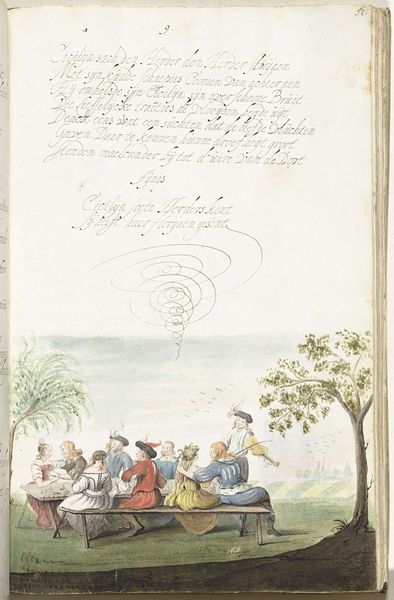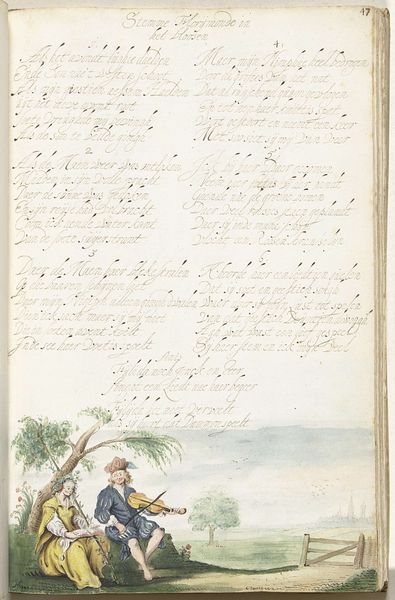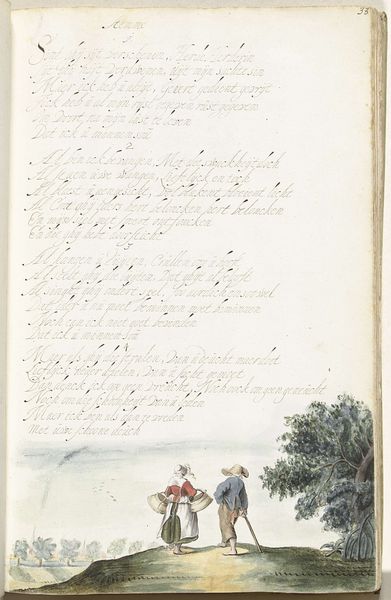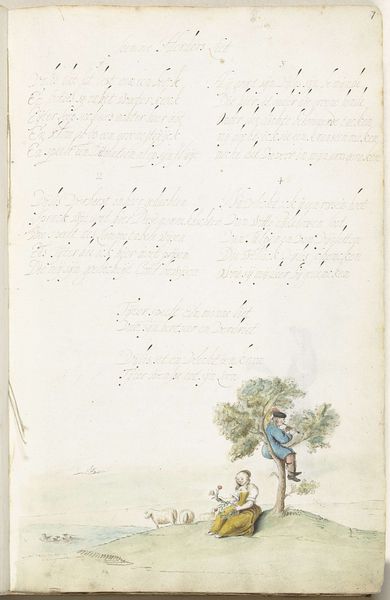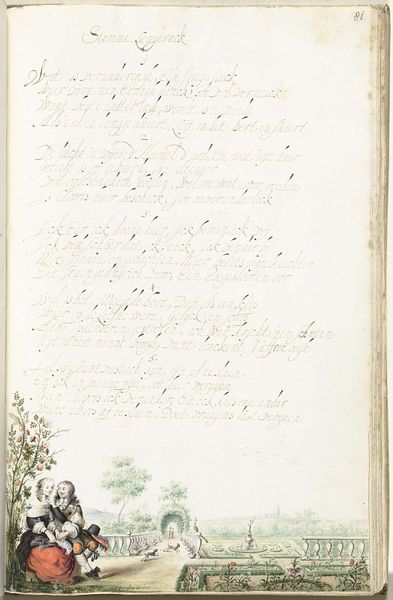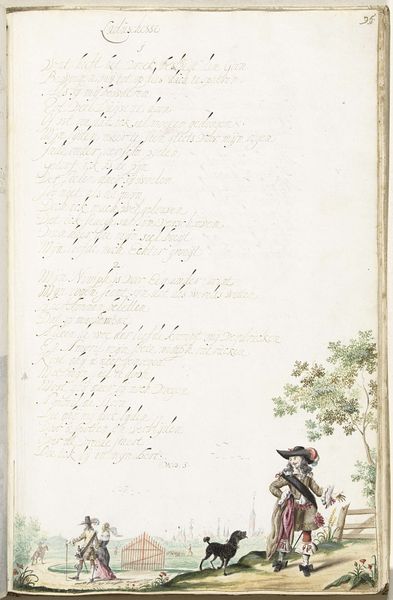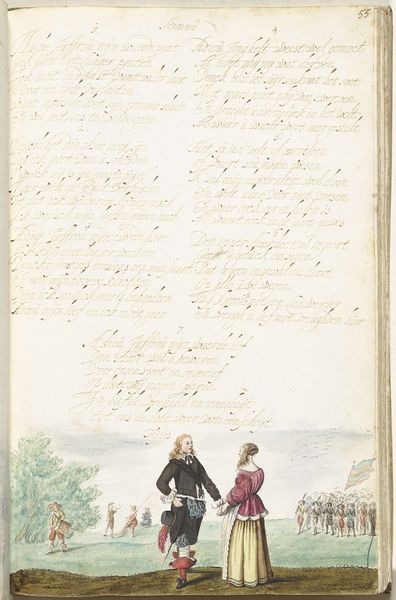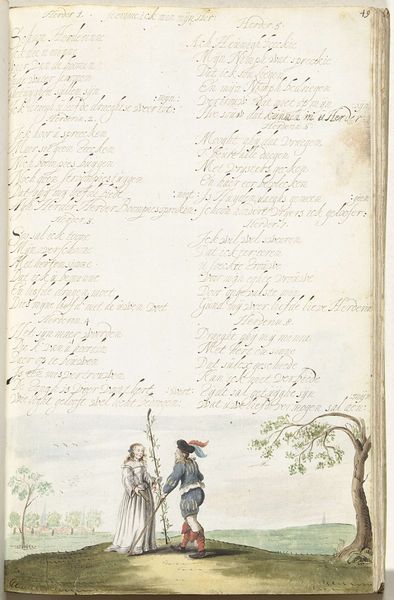
drawing, paper, watercolor
#
drawing
#
baroque
#
dutch-golden-age
#
landscape
#
figuration
#
paper
#
watercolor
#
coloured pencil
#
watercolour illustration
#
genre-painting
#
northern-renaissance
Dimensions: height 313 mm, width 204 mm
Copyright: Rijks Museum: Open Domain
Curator: Let's consider Gesina ter Borch's "Four Pastoral Figures in a Landscape," created around 1654. It's a watercolor and ink drawing on paper, currently held in the Rijksmuseum collection. Editor: It's so delicate. The figures seem caught between formal portraiture and something more informal. They are carefully drawn but presented casually in the landscape with text. What do you see in this piece, especially considering the historical context of women artists at the time? Curator: The pastoral scene invites us to think about constructed notions of leisure and nature. These figures, adorned with floral crowns, signal a connection to the land. Consider how this relates to Ter Borch’s position as a woman artist. Could this be a subtle commentary on societal expectations and limitations placed on women in 17th-century Netherlands? Editor: That's interesting. So, by depicting a somewhat idealized version of nature and society, she might be subtly questioning those very ideals? Curator: Precisely. How might depicting leisure also function as a coded representation of freedom or aspiration when situated within Ter Borch’s lived experiences and gendered constraints? The act of depicting women in harmony with nature wasn't always neutral. Can we read this artwork in a more feminist or political way? Editor: I never considered that a seemingly innocent scene like this could be interpreted with such complexity! The layers of meaning hidden beneath the surface are amazing. Curator: It really highlights how art history is so important to contemporary feminist art theories. Now when I look at any Golden Age artwork by women artists I have to keep these contexts in mind. Editor: Me too. Thank you. I can’t wait to examine other pieces through a similar lens.
Comments
No comments
Be the first to comment and join the conversation on the ultimate creative platform.

